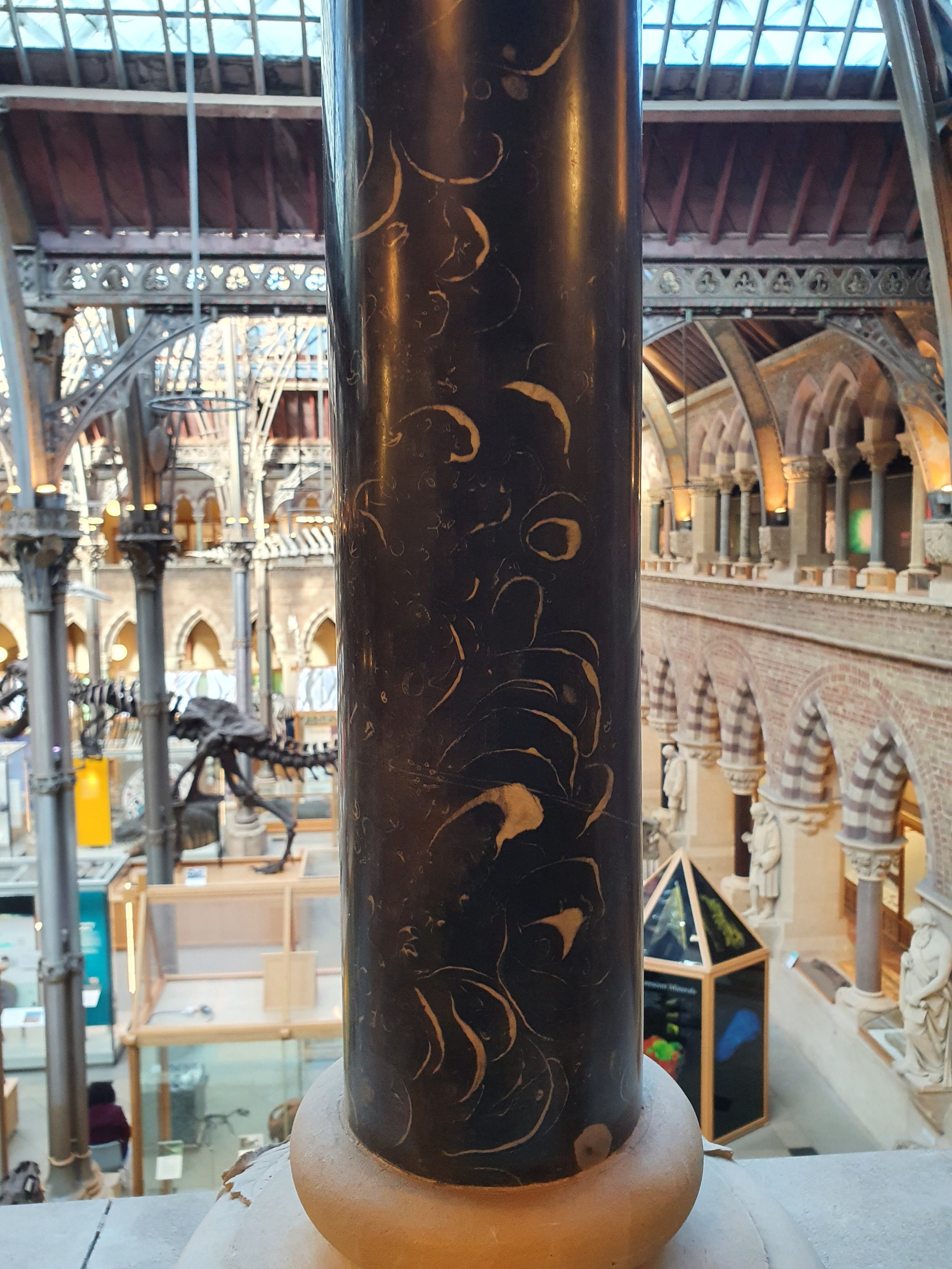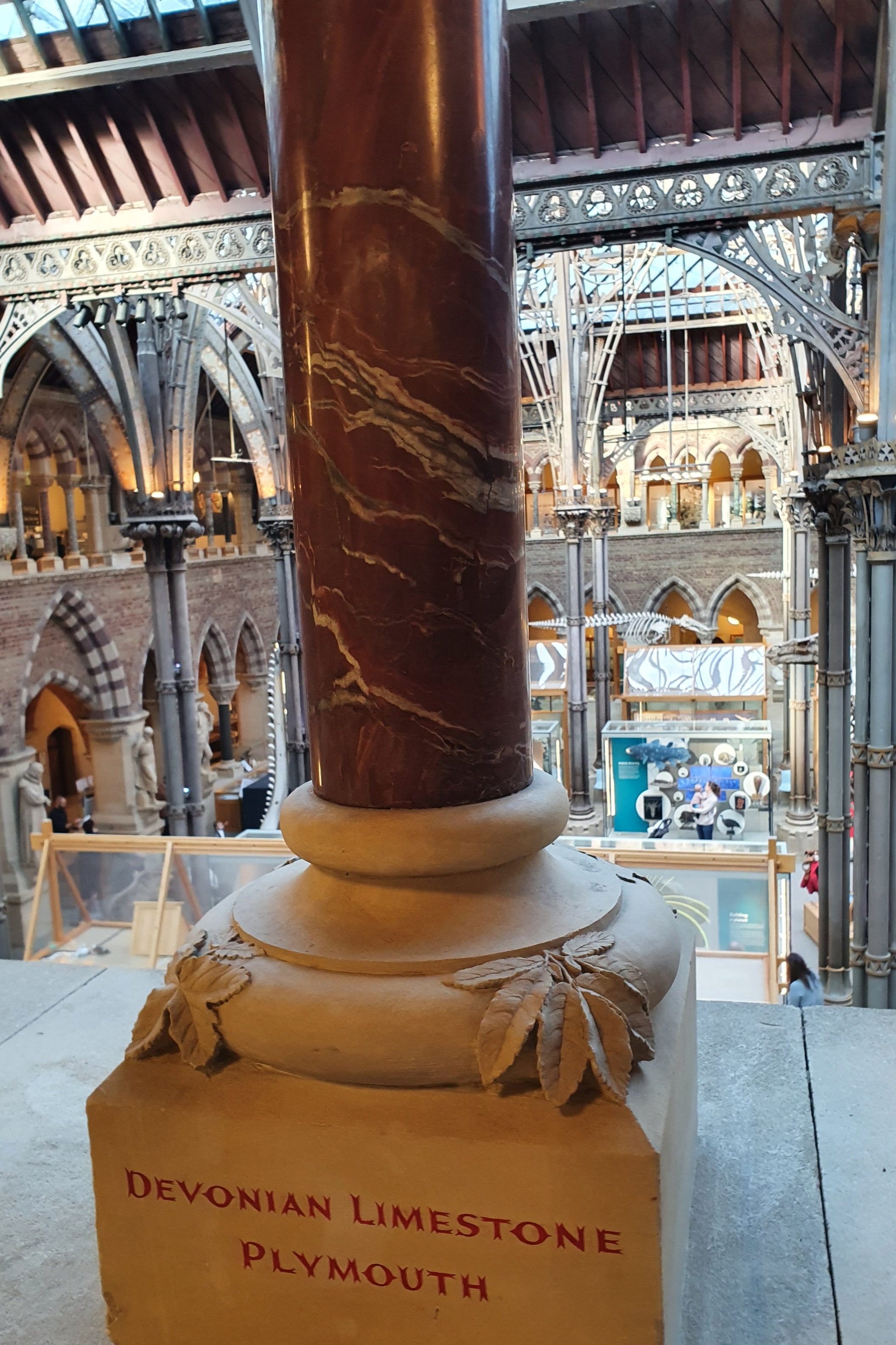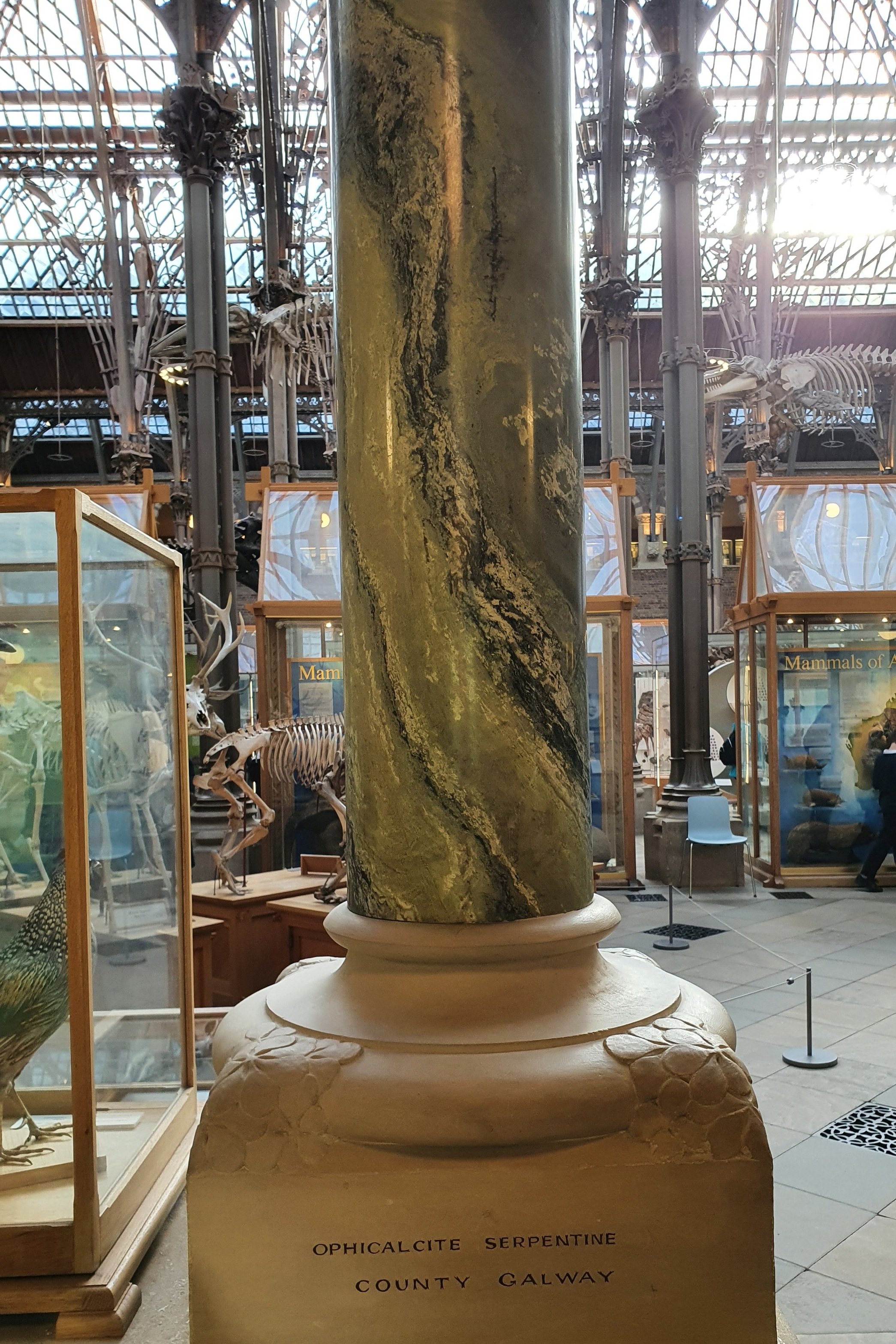A Walk Through Britain’s Geology at the Oxford Natural History Building, with Nina Morgan
The Natural History Building of the Oxford University Museum is, as usual, bustling with visitors – regulars, out-of-towners and parties of excited schoolchildren roaming the latest spectacular exhibition. But to Nina Morgan – and me for that matter – it’s the building itself that’s the main exhibit. That’s because, back in the Mid-19 th Century, its sponsors, designers and architects all agreed that the very fabric of the building was to represent the geology of Britain, which at that time included Ireland. We’re lucky that most of geological time, and a huge variety of rock types, are represented in our islands. We’re even luckier to have it all beautifully displayed for us in this one building.
Nina is greeted like an old friend at the museum. Everyone knows her, from the academic staff to the lady in the tea shop. And that’s not surprising, because over the past two and a half years (absences due to lockdown notwithstanding), she and Philip Powell have been there regularly, lovingly and meticulously documenting the geological wonders that the casual visitor might not see. The result is their recently-published book “A Story in Stone: The Geology of the Oxford University Museum of Natural History Building.”
Full disclosure – I’m not a totally unbiased observer here. Together with Nina, I recently edited a multi-author booklet of affectionate stories about Eric Robinson, an inspiration to both of us and, most relevantly to this article, the UK’s greatest pioneer of appreciating geology in an urban setting. I was therefore pre-disposed to love this book, although I can honestly say my expectations were confirmed and exceeded. So instead of posting a review, as was my first impulse, I thought it might be more interesting to share Nina’s experience first-hand. Hence, here I am, just up from London, book in hand, on the museum’s Portland Stone porch steps and ready for the grand tour.
The design for the building was approved in 1854, and the foundation stone laid by the Earl of Derby in 1856. Numerous eminent Victorians contributed to its planning and execution, but perhaps the greatest driving forces were Henry Acland, Professor of Medicine, and John Phillips, Oxford’s first Professor of Geology. Phillips was determined that the building itself should be a geological teaching tool, and together with Acland and others he raised funds and wrote to quarry owners throughout Britain to secure the necessary materials. They succeeded admirably, and the results are here, well-preserved, for all to see. The exterior of the building alone features 13 different building stones, from the buffs, browns and oranges of the sandstone and limestone frontage to the exquisite mosaic of slates on the rooftops – Cumbrian green and Welsh blue.
Nina guides me through the porch and I step gingerly on to the museum floor, a geometrically patterned wonder of multicoloured stone. She points out the bluish, Lower Jurassic Wilmcote Limestone (with the occasional ammonite), making a startling counterpoint to the whites and reds of the Permian Magnesian Limestones. But I’m eager to get to the main event; the columns, all 135 of them, distributed between the porch, the ground floor and the galleries.
The columns display ornamental stones from all over the British Isles – some well- known and some more obscure, each with a carved plinth showing the rock type and geographical origin. With knowledge born of long familiarity, Nina talks avidly as we pass the swirling green and white Connemara Marble, the startling red Scottish granites, the Cornish serpentines, the astonishing varieties of fossiliferous Carboniferous Limestone, and many others. Nina’s discourse is interrupted by my exclamation of delight on discovering a column of rare Derbyshire alabaster, mined close to where I grew up, from quarries that are long abandoned and overgrown.
It’s no exaggeration to say that Nina and Phil’s book describes, and illustrates, every rock type in the building. There’s a useful index and a glossary of geological terms at the end. But a massive stand-out for me is the way the columns are covered. Each is beautifully photographed – both the whole column and close-up – and is accompanied by a description of the specific ornamental stone, an inset map showing its point of origin, where else it can be seen, and a general geological explanation of its formation. This book is an Aladdin’s cave of exquisite pictures and useful information, and not just meant for academics. It will enable anyone with an eye for natural history to see the museum in a new light, fulfilling John Phillips’ dream of a building that also serves as a field trip - a tour through British geology.
I’m slightly ashamed to say that this was my first visit to the Oxford Natural History building. It definitely won’t be my last, though. There’s just too much to take in on one go, so I fully intend to return soon – with this book clutched firmly in my hand!
A Story in Stone : The geology of the Oxford University Museum of Natural History Building. By Nina Morgan and Philip Powell, photographs by Mike Tomlinson. Geologica Press, Chadlington, Chipping Norton, Oxfordshire, OX7 3LX. Available from www.gravestonegeology.uk.





